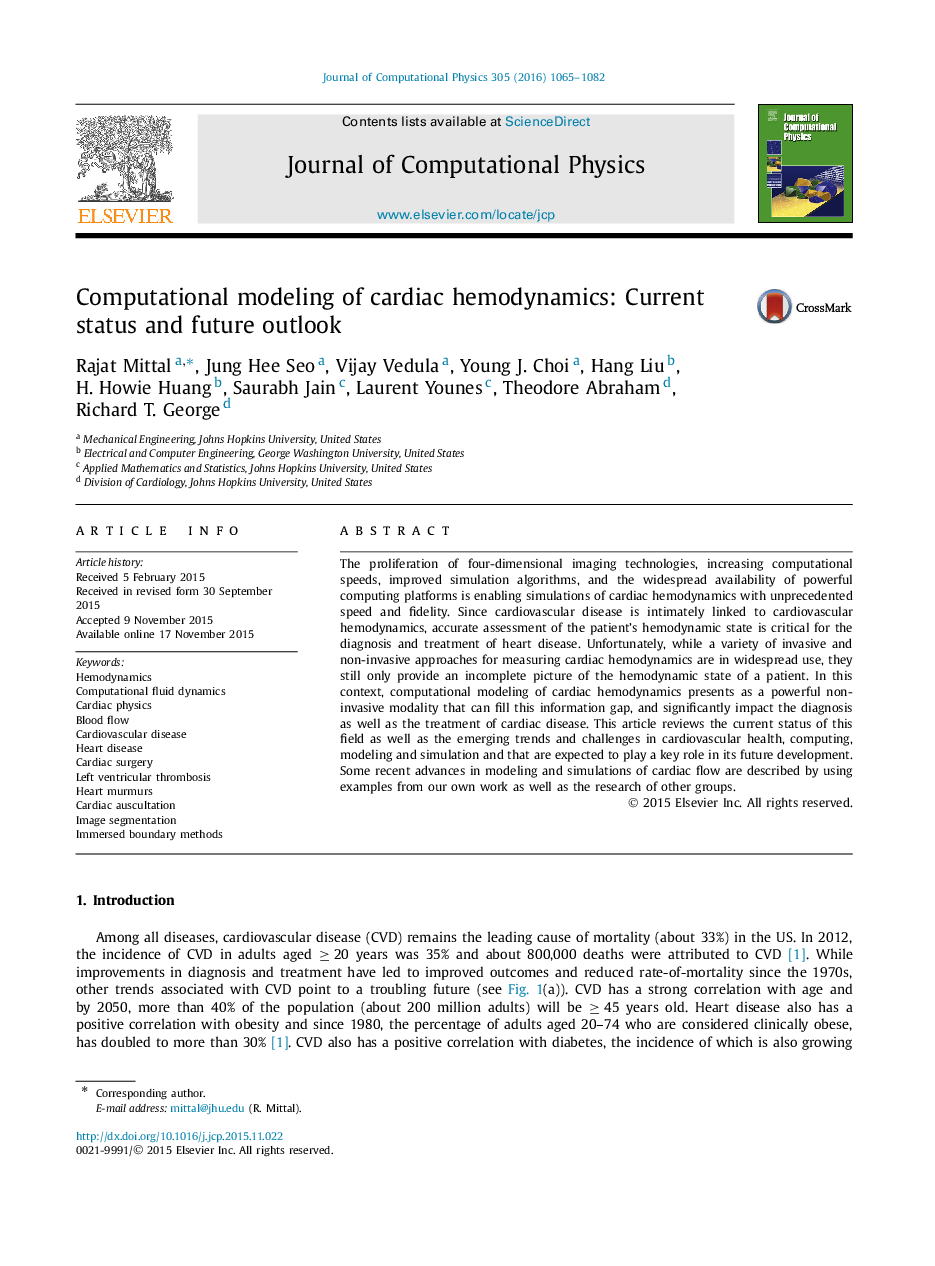| Article ID | Journal | Published Year | Pages | File Type |
|---|---|---|---|---|
| 6930965 | Journal of Computational Physics | 2016 | 18 Pages |
Abstract
The proliferation of four-dimensional imaging technologies, increasing computational speeds, improved simulation algorithms, and the widespread availability of powerful computing platforms is enabling simulations of cardiac hemodynamics with unprecedented speed and fidelity. Since cardiovascular disease is intimately linked to cardiovascular hemodynamics, accurate assessment of the patient's hemodynamic state is critical for the diagnosis and treatment of heart disease. Unfortunately, while a variety of invasive and non-invasive approaches for measuring cardiac hemodynamics are in widespread use, they still only provide an incomplete picture of the hemodynamic state of a patient. In this context, computational modeling of cardiac hemodynamics presents as a powerful non-invasive modality that can fill this information gap, and significantly impact the diagnosis as well as the treatment of cardiac disease. This article reviews the current status of this field as well as the emerging trends and challenges in cardiovascular health, computing, modeling and simulation and that are expected to play a key role in its future development. Some recent advances in modeling and simulations of cardiac flow are described by using examples from our own work as well as the research of other groups.
Keywords
Related Topics
Physical Sciences and Engineering
Computer Science
Computer Science Applications
Authors
Rajat Mittal, Jung Hee Seo, Vijay Vedula, Young J. Choi, Hang Liu, H. Howie Huang, Saurabh Jain, Laurent Younes, Theodore Abraham, Richard T. George,
